 | |
| Manufacturers | TSR Hobbies, Inc. |
|---|---|
| Designers | Gary Gygax |
| Years active | 1976 |
| Genres | Wargame |
Little Big Horn: Custer's Last Stand is a wargame published by TSR in 1976 that simulates the Battle of Little Big Horn.
 | |
| Manufacturers | TSR Hobbies, Inc. |
|---|---|
| Designers | Gary Gygax |
| Years active | 1976 |
| Genres | Wargame |
Little Big Horn: Custer's Last Stand is a wargame published by TSR in 1976 that simulates the Battle of Little Big Horn.
Little Big Horn is a 2-player wargame in which one player controls the forces of George Custer, and the other player controls the forces under Sitting Bull and Crazy Horse. The map is printed on oilskin rather than paper. [1]
The battle had already been simulated in The Battle of the Little Big Horn published by Waddingtons in 1962. But 1976 marked the centennial of the battle, and three small games publishers brought new games about the battle to Origins II: Custer's Last Stand by Battleline; 7th Cavalry by Attack Wargaming Association; and Little Big Horn: Custer's Last Stand, a game designed by Gary Gygax, with interior art by Brian Blume, and published by TSR. [2]
Gygax described the game in 2003 as "the tactical conflict between the 7th Cavalry under Lt. Col. George Armstrong Custer and the various 'Sioux' and allied Indian tribes. ... The LBH game was actually quite accurate, and the Cavalry had a fair chance to triumph, just as Custer had hoped — if they stayed together and had their pack train with ammunition with them." [3]
TSR's game did not sell well; neither did the two competing games introduced at Origins. As Gygax recalled, "Of course, all three companies suffered sales-wise, as interested gamers were divided." [3]
In Issue 28 of Moves (August/September 1976), game designer Richard Berg called the oilskin map "great for durability — horrible for playing." He also thought "the game just does not hang together well enough to justify the design." He concluded "Play is somewhat predictable and there's not much that either side can do to change it." [1] *

Ernest Gary Gygax was an American game designer and author best known for co-creating the pioneering tabletop role-playing game Dungeons & Dragons (D&D) with Dave Arneson.

TSR, Inc. was an American game publishing company, best known as the original publisher of Dungeons & Dragons (D&D). Its earliest incarnation, Tactical Studies Rules, was founded in October 1973 by Gary Gygax and Don Kaye. Gygax had been unable to find a publisher for D&D, a new type of game he and Dave Arneson were co-developing, so founded the new company with Kaye to self-publish their products. Needing financing to bring their new game to market, Gygax and Kaye brought in Brian Blume in December as an equal partner. Dungeons & Dragons is generally considered the first tabletop role-playing game (TTRPG), and established the genre. When Kaye died suddenly in 1975, the Tactical Studies Rules partnership restructured into TSR Hobbies, Inc. and accepted investment from Blume's father Melvin. With the popular D&D as its main product, TSR Hobbies became a major force in the games industry by the late 1970s. Melvin Blume eventually transferred his shares to his other son Kevin, making the two Blume brothers the largest shareholders in TSR Hobbies.
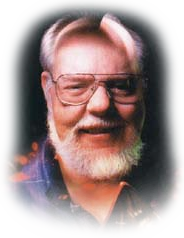
David Lance Arneson was an American game designer best known for co-developing the first published role-playing game (RPG), Dungeons & Dragons, with Gary Gygax, in the early 1970s. Arneson's early work was fundamental to the role-playing game (RPG) genre, pioneering devices now considered to be archetypical, such as cooperative play to develop a storyline instead of individual competitive play to "win" and adventuring in dungeon, town, and wilderness settings as presented by a neutral judge who doubles as the voice and consciousness of all characters aside from the player characters.
Simulations Publications, Inc. (SPI) was an American publisher of board wargames and related magazines, particularly its flagship Strategy & Tactics, in the 1970s and early 1980s. It produced an enormous number of games and introduced innovative practices, changing the course of the wargaming hobby in its bid to take control of the hobby away from then-dominant Avalon Hill. SPI ran out of cash in early 1982 when TSR called in a loan secured by SPI's assets. TSR began selling SPI's inventory in 1982, but later acquired the company's trademarks and copyrights in 1983 and continued a form of the operation until 1987.
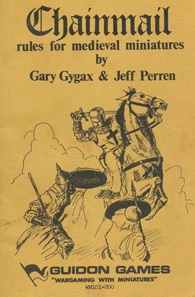
Chainmail is a medieval miniature wargame created by Gary Gygax and Jeff Perren. Gygax developed the core medieval system of the game by expanding on rules authored by his fellow Lake Geneva Tactical Studies Association (LGTSA) member Jeff Perren, a hobby-shop owner with whom he had become friendly. Guidon Games released the first edition of Chainmail in 1971.

Alexander the Great is a board wargame first published by Guidon Games in 1971 that simulates the Battle of Arbela in 331 BCE, also known as the Battle of Gaugamela. A revised edition was published by Avalon Hill in 1974. Both editions of the game were notable for having what one critic described as "one of the ugliest maps ever to curse a war game."

Richard Harvey Berg was a prolific American wargame designer. He was inducted into the Charles Roberts Awards Hall of Fame in 1987.
Guidon Games produced board games and rulebooks for wargaming with miniatures, and in doing so influenced Tactical Studies Rules, the publisher of Dungeons & Dragons. The Guidon Games publishing imprint was the property of Lowrys Hobbies, a mail-order business owned by Don and Julie Lowry. About a dozen titles were released under the imprint from 1971 to 1973.

Source of the Nile is a board game published by Discovery Games in 1977 that simulates the exploration of Africa in the 19th century. A second edition of the game was published by Avalon Hill in 1979.
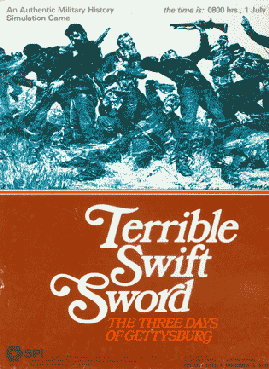
Terrible Swift Sword: Battle of Gettysburg Game is a grand tactical regimental level board wargame published by Simulations Publications, Inc. (SPI) in 1976 that simulates the Battle of Gettysburg during the American Civil War. A second edition was published by TSR in 1986.

Robert J. Kuntz is a game designer and author of role-playing game publications. He is best known for his contributions to various Dungeons & Dragons-related materials.

Owl and Weasel was a newsletter for board gamers, role-playing gamers and wargamers, published in London, England, by Games Workshop. A total of 25 issues were published from February 1975 until April 1977; it was edited by Steve Jackson and Ian Livingstone. It was superseded by White Dwarf.
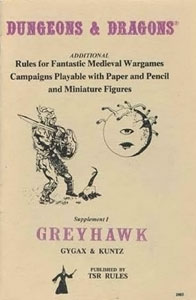
Greyhawk is a supplementary rulebook written by Gary Gygax and Robert J. Kuntz for the original edition of the Dungeons & Dragons (D&D) fantasy role-playing game. It has been called "the first and most important supplement" to the original D&D rules. Although the name of the book was taken from the home campaign supervised by Gygax and Kuntz based on Gygax's imagined Castle Greyhawk and the lands surrounding it, Greyhawk did not give any details of the castle or the campaign world; instead, it explained the rules that Gygax and Kuntz used in their home campaign, and introduced a number of character classes, spells, concepts and monsters used in all subsequent editions of D&D.

Swords & Spells is a supplementary rulebook by Gary Gygax for the original edition of the Dungeons & Dragons fantasy role-playing game. Its product designation is TSR 2007.

The Dungeons & Dragons Basic Set is a set of rulebooks for the Dungeons & Dragons (D&D) fantasy role-playing game. First published in 1977, it saw a handful of revisions and reprintings. The first edition was written by J. Eric Holmes based on Gary Gygax and Dave Arneson's original work. Later editions were edited by Tom Moldvay, Frank Mentzer, Troy Denning, and Doug Stewart.

Lankhmar is a fantasy board wargame published by TSR in 1976 that is based on both the Swords and Sorcery short stories of Fritz Leiber set in the fictional city of Lankhmar, and on a board game designed by Lieber and Harry Otto Fischer while they were in college.
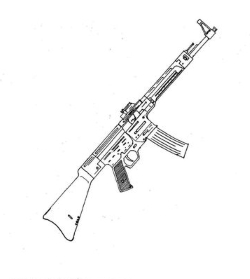
JagdPanther is a game magazine that was published from 1973 to 1976.
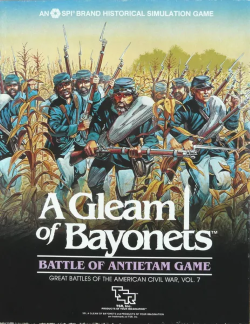
A Gleam of Bayonets: The Battle of Antietam is a board wargame published by the Simulations Publications, Inc. (SPI) subsidiary of TSR in 1983 that is based on the American Civil War Battle of Antietam.

Custer's Last Stand, subtitled "The Battle of Little Big Horn, June 25, 1876", is a board wargame published by Battleline in 1976 that simulates the Battle of the Little Big Horn.

7th Cavalry is a board wargame published by Attack Wargaming Association (AWA) in 1976 that simulates the Battle of Little Big Horn. Published on the centenary of the battle, the game had two other rival games about the same battle introduced at the same games fair, and as a result, none of the games sold well. In addition, critics found this game's rules too simple, and not well written.